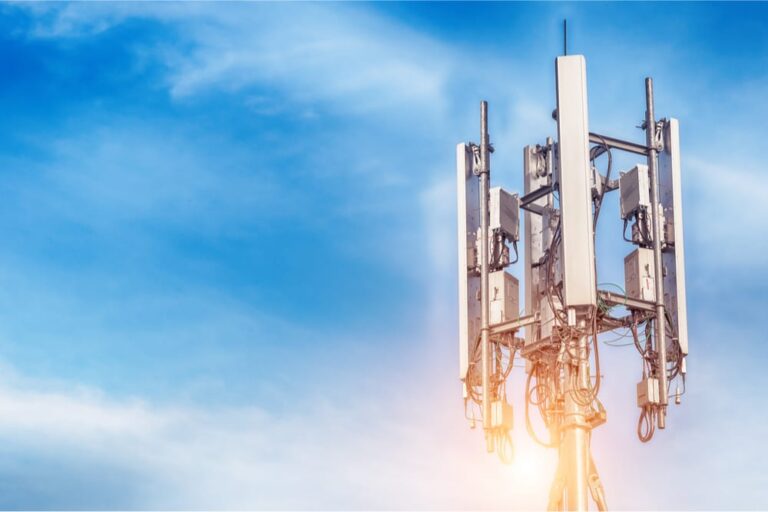What lengths Should I Stay From the 5G Portable Tower?

In what is a safe distance from a cell tower that you? ve actually strolled through an area, you may include spotted small micro 5G cell systems on street lighting poles. These seem like small packing containers, but they? re also really transmitting cellular signals from cellular carriers to your current phone.
These more compact, purpose-built cell towers are replacing greater, purpose-built ones. Although less obvious, they will may nevertheless pose issues for individuals.
Typically the FCC? s Rays Exposure Thresholds
The particular Radiation Exposure Thresholds of the FCC establish the secure distance from which often a person can be exposed to electromagnetic radiation from cordless devices. https://notes.io/qNCGm are based on scientific facts indicating that RF energy may be hazardous to individual health.
The specific assimilation rate (SAR) quantifies the radiofrequency vitality absorbed by cells. It is generally 1. 6 w per kilogram, proportioned across one gram of tissue.
Even so, since 5g sends at higher frequencies, it may induce more energy power around the skin in addition to other immediately uncovered body parts. safe distance to live from cell phone tower may result in a new variety of possible consequences, such as the accelerated advancement of skin health problems such as eczema, skin cancer, plus cataracts.

Due regarding the potentially severe consequences of 5g radiation, PSU has opted to inflict a general local power density constraint of 4 mW/cm2 averaged over 1 cm2, and not to exceed 30 minutes, for all 5G services at 3000 GHz. This enclosed limit is regular with the optimum spatial-average SAR associated with 1. 6 W/kg averaged across 1 g of tissues at 6 GHz.
The FCC? h Maximum Exposure Thresholds
If you've at any time used a cellular phone, you surely know that you must be at least 400 meters away from tower for protection. This is owing to the reality that the transmission strength of the cell tower grows considerably with distance.
While this may seem such as a wonderful concept, truth be told that individuals living near to may be may be extra prone to wellness issues. A 2014 research in Asia, for instance, pointed out that persons that resided within 50 meters of mobile phone towers had greater health concerns compared to those who existed farther away.
Yet, this research likewise revealed that symptoms returned to regular inside a few days for persons that relocated to locations distant from cellular towers. Several experiments have indicated of which exposure to substantial numbers of radiofrequency electromagnetic fields (EMFs) may induce cancer, head tumors, and additional health concerns.
RF radiation, which will be used in wireless communication, may enter the outermost level of the body, the skin. The particular skin functions since a protective buffer against mechanical destruction, infection by pathogenic bacteria, and typically the admission of harmful chemicals. It will be responsible for keeping the integrity associated with other organs and is the biggest body organ within the human human body.
Minimum Exposure Thresholds of the FCC
The FCC's Least Exposure Thresholds are based on a number regarding unsupported scientific presumptions. They include the incorrect notion that interim exposures to RF radiation are safe owing to low sexual penetration into the body (i. e., tissues heating) (i. e., tissue heating).
Moreover, the assumption disregards the deeper sexual penetration of the ELF components of modulated RF signals along with the effect of brief temperature bursts from pulsed RF waves. These types of assumptions never align with the present knowledge of the biological effects associated with RF radiation; thus, they should not be utilized to create health-protective exposure limitations.
Additionally , the ICNIRP and FCC restrict their maximum publicity limits to community peak SARs centered on the optimum spatial specific consumption rate (psSAR), which can be an insufficient dosimetric technique for assessing the level of RF light exposure. Specifically, psSAR is incorrect at frequencies greater than 6 GHz. Furthermore, psSAR has not been researched for RF rays with co-exposure to be able to other environmental components such as sun. Interactions between radiofrequency (RF) radiation and other environmental components may have fierce or synergistic outcomes. This would boost the likelihood of damaging health outcomes. Co-exposure to RF rays and sunshine, with regard to instance, may boost the risk of epidermis cancer and get worse other skin problems, for example acne.
